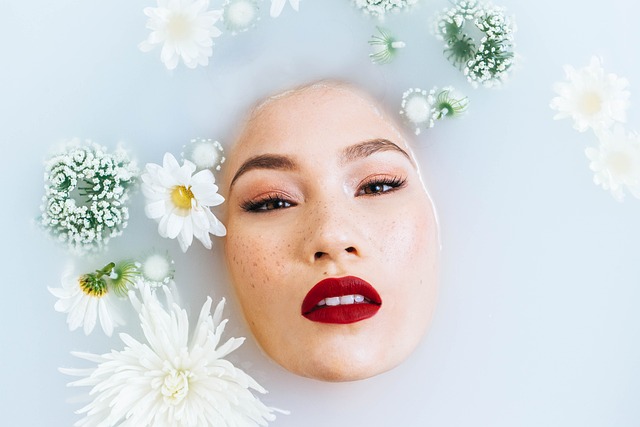
Do you want to take better care of your skin but don’t know where to start? Building a personalized skincare routine can help you achieve the skin of your dreams. In this article, we will discuss the basics of skincare, how to know what skin type you have, and how to create a skincare routine that works for you.
Outline
- Introduction: What is a Skincare Routine?
- Part 1: Understanding Your Skin Type
- Part 2: Creating Your Skincare Routine
- Part 3: Adopting a Healthy Lifestyle
- Conclusion: Building a Skincare Routine That Works for You
Introduction: What is a Skincare Routine?
A skincare routine is a daily regimen of products and practices designed to keep your skin healthy and looking its best. It usually includes cleansing, toning, moisturizing, and sun protection, as well as other products such as serums and masks. A good skincare routine should be tailored to your skin type and needs and your lifestyle.
While there is no one-size-fits-all skincare routine, there are some basic steps that everyone should follow. These include:
- Cleansing: It is important to use a gentle cleanser to remove dirt, oil, and makeup from your skin.
- Toning: This helps remove any remaining dirt and oil and balance your skin’s pH level.
- Moisturizing: This helps keep your skin hydrated and looking its best.
- Sun Protection: This helps protect your skin from the sun’s harmful UV rays.
In addition to these basic steps, you may want to add other products to your skincare routine, such as serums, masks, and exfoliants. However, it is important to note that these are not necessary for everyone, and you should consult with a dermatologist if you have any questions or concerns about your skin.
Part 1: Understanding Your Skin Type
Before creating a skincare routine that works for you, you need to understand your skin type. Knowing your skin type will help you determine which products and ingredients are best suited for your skin. There are four main skin types: normal, oily, dry, and combination.
Normal: Normal skin is not too oily or too dry. It is free of blemishes and has a healthy glow. If you have normal skin, you may only need to use a basic skincare routine with a gentle cleanser, toner, and moisturizer.
Oily: Oily skin is characterized by enlarged pores, a shiny appearance, and frequent breakouts. If you have oily skin, you should look for products that are oil-free and non-comedogenic. You may also want to use a gentle cleanser, toner, and exfoliant to help keep your skin clear.
Dry: Dry skin is characterized by tightness, flakiness, and wrinkles. If you have dry skin, you should look for products that are hydrating and nourishing. You may want to use a gentle cleanser, toner, moisturizer, and a weekly mask or exfoliant to help keep your skin hydrated and looking its best.
Combination: A combination skin is a mix of oily and dry, usually with oily areas around the T-zone (forehead, nose, and chin) and dry areas on the cheeks and around the eyes. If you have combination skin, you should look for products that are designed for all skin types. You may want to use a gentle cleanser, toner, and moisturizer, as well as a weekly exfoliant or mask.
It is important to note that your skin type can change due to environmental factors, hormones, and lifestyle. You should check in with yourself regularly to make sure your skincare routine is still working for you.
Part 2: Creating Your Skincare Routine
Once you have determined your skin type, you can begin creating your skincare routine. Here are some tips for creating a routine that works for you:
- Start with the basics. Your skincare routine should include a gentle cleanser, toner, and moisturizer. Look for products that are specifically designed for your skin type.
- Be consistent. It is important to use your products regularly and consistently. Make sure to follow the directions on the product packaging for the best results.
- Know your ingredients. Pay attention to the ingredients in your skincare products. Avoid products that contain harsh chemicals or irritants, and look for natural ingredients that are known to be beneficial for your skin type.
- Be patient. It can take time to find the right products and see results. Be patient and give your routine time to work.
Once you have established the basics of your skincare routine, you may want to add additional products, such as serums, masks, and exfoliants. However, it is important to note that these are not necessary for everyone. If you are unsure about which products to use, consult with a dermatologist for advice.
Part 3: Adopting a Healthy Lifestyle
In addition to creating a skincare routine that works for you, it is important to adopt a healthy lifestyle to ensure your skin looks its best. Here are some tips for living a healthy lifestyle:
- Eat a healthy diet. Eating a well-balanced diet that includes fruits, vegetables, and lean proteins can help keep your skin healthy and looking its best.
- Drink plenty of water. Staying hydrated is key to having healthy skin. Make sure to drink at least 8 glasses of water a day.
- Get enough sleep. Sleep is important for your skin’s health and appearance. Aim for at least 8 hours of sleep each night.
- Protect your skin from the sun. Make sure to use sunscreen every day and wear protective clothing when you are outside.
- Reduce stress. Stress can take a toll on your skin, so it is important to find ways to manage it. Try meditation, yoga, or journaling to help reduce stress and keep your skin healthy.
Conclusion: Building a Skincare Routine That Works for You
Building a skincare routine that works for you can be a challenge, but it is worth the effort. Start by understanding your skin type and then create a routine that includes the basics (cleansing, toning, moisturizing, and sun protection). You may also want to add additional products such as serums and masks. Finally, adopt a healthy lifestyle to ensure your skin looks its best. With the right products and lifestyle, you can achieve the skin of your dreams.


